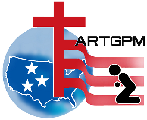
 捐助 Donate
捐助 Donate
America Return to God Prayer Movement
Home ![]() Literature
Literature ![]() What Can We Learn From The 18th Century Awakening
What Can We Learn From The 18th Century Awakening
What Can We Learn From The 18th Century Awakening
--From Book: America, Return to God
By Gerald McDermott
Evangelicals in the United States today feel frustrated because they have failed to transform American society in recent years. English and American evangelicals in 1730 felt much the same way. Many years of political and social effort had not succeeded in bringing reform. Yet within a decade they experienced what is now called “The Great Awakening,” during which time their nations’ political and social cultures were radically impacted by Christian values. The following ten characteristics of the revivals that took place in America, England and Europe are instructive:
1. Prayer
Evangelicals in the 1700s learned that corporate prayer was a prerequisite for outpourings of God’s Spirit. The revivals in many places were preceded by days of prayer and fasting. Jonathan Edwards believed that corporate prayer was more effective than just the combined prayers of individuals.
2. Leadership
God raised up strong leaders to guide the movement. Jonathan Edwards was the theologian of the awakenings and his writings were a powerful influence even until the end of the following century. George Whitefield was a dramatic and powerful orator, able to deeply move audiences with his sermons. John Wesley was an administrative genius who established an extremely effective small-group structure of “class meetings” which kept the revival fires burning.
3. Doctrine
Revival preachers of the time focused on the great Reformation doctrines of justification by faith and the atonement. They emphasized God’s judgment and then his grace.
4. Emotionalism
The revivalists unashamedly appealed to people’s emotions. They felt that their listeners’ problem was not a lack of knowledge but a need to take action. They abandoned the formality of manuscripts or notes and preached as the Holy Spirit led.
5. Music
As one aspect of that emotionalism, evangelicals noted that music was an effective way to stir religious affections and they frequent use of it.
6. Open-air Meetings
Whitefield preached in open spaces where large crowds could gather. Wesley took the messages to jails, inns and ships, as well as outdoors.
7. Persecution
At times these preachers faced fierce oppositions from hecklers, gangs of attackers and press.
8. Testimonies
Reports of revivals in other places often sparked new outbreaks as lay people who had been there first shared firsthand account of what the Holy Spirit was doing.
9. Holy Spirit
The 18th-century revivalists expected the Spirit to manifest His presence in powerful, visible ways.
10. Social Action
A greater concern for the poor and downtrodden often resulted from these revivals. Jonathan Edwards taught that it was the Christian's duty to be charitable. Whitefield devoted a great deal of his energy to an orphanage he founded in Georsia.
The conclusion can be drawn from the 18th-century experience that a deep and powerful spiritual renewal can be more effective in transforming a culture than political action.
(Reprinted with permission from The Forerunner International, P.O.Box 362173, Melbourne, FL 32936-2137.)
Home ![]() Literature
Literature ![]() What Can We Learn From The 18th Century Awakening
What Can We Learn From The 18th Century Awakening